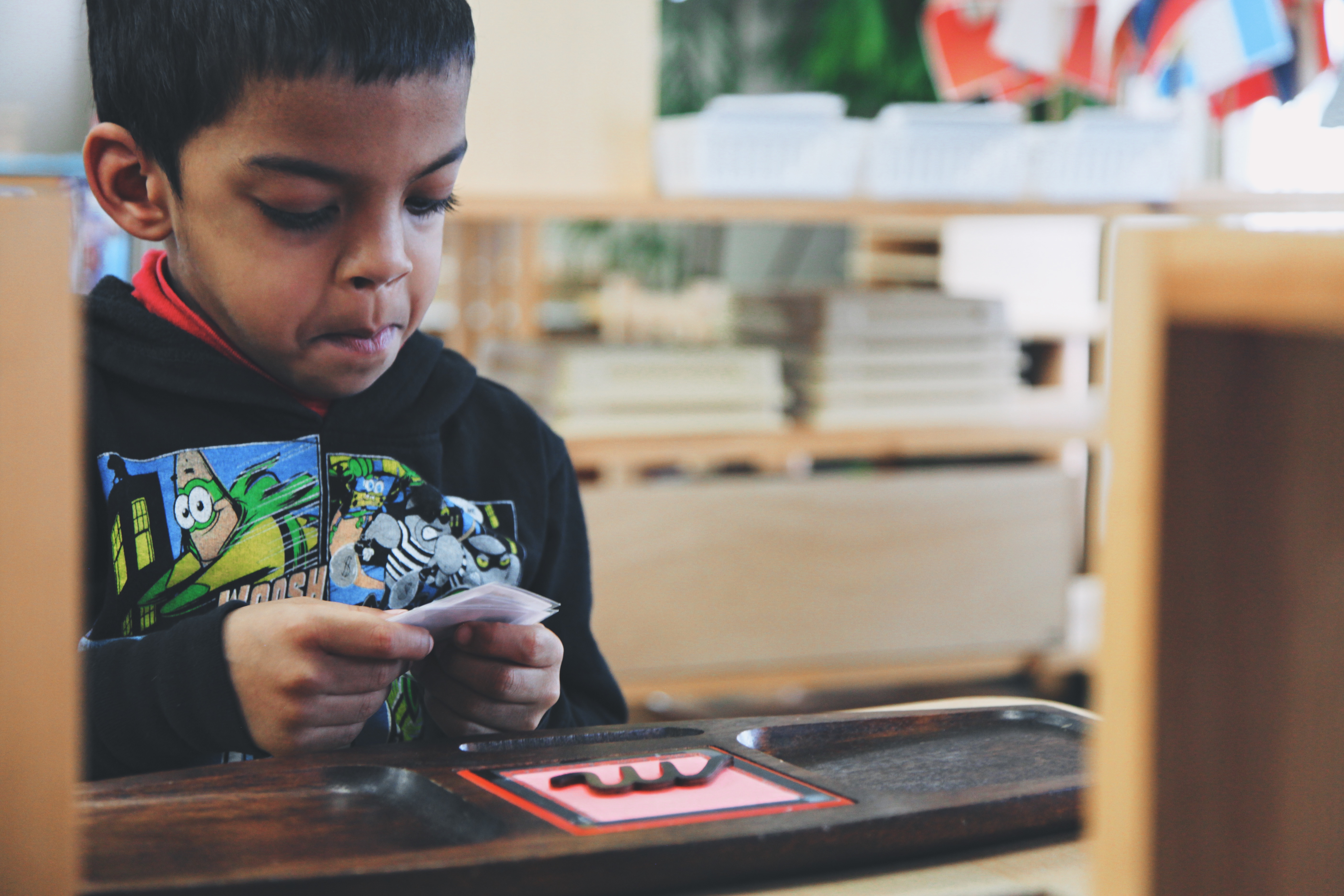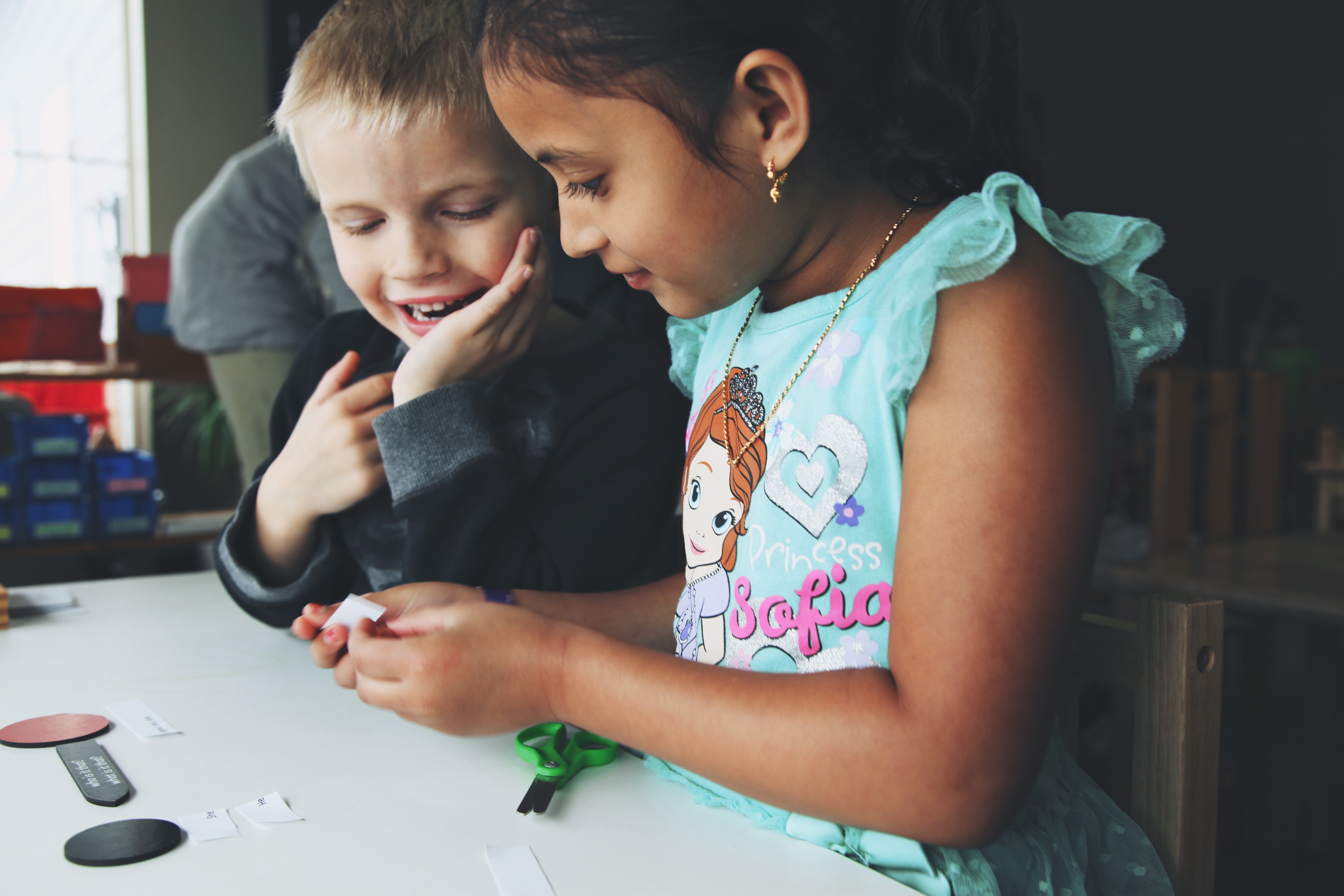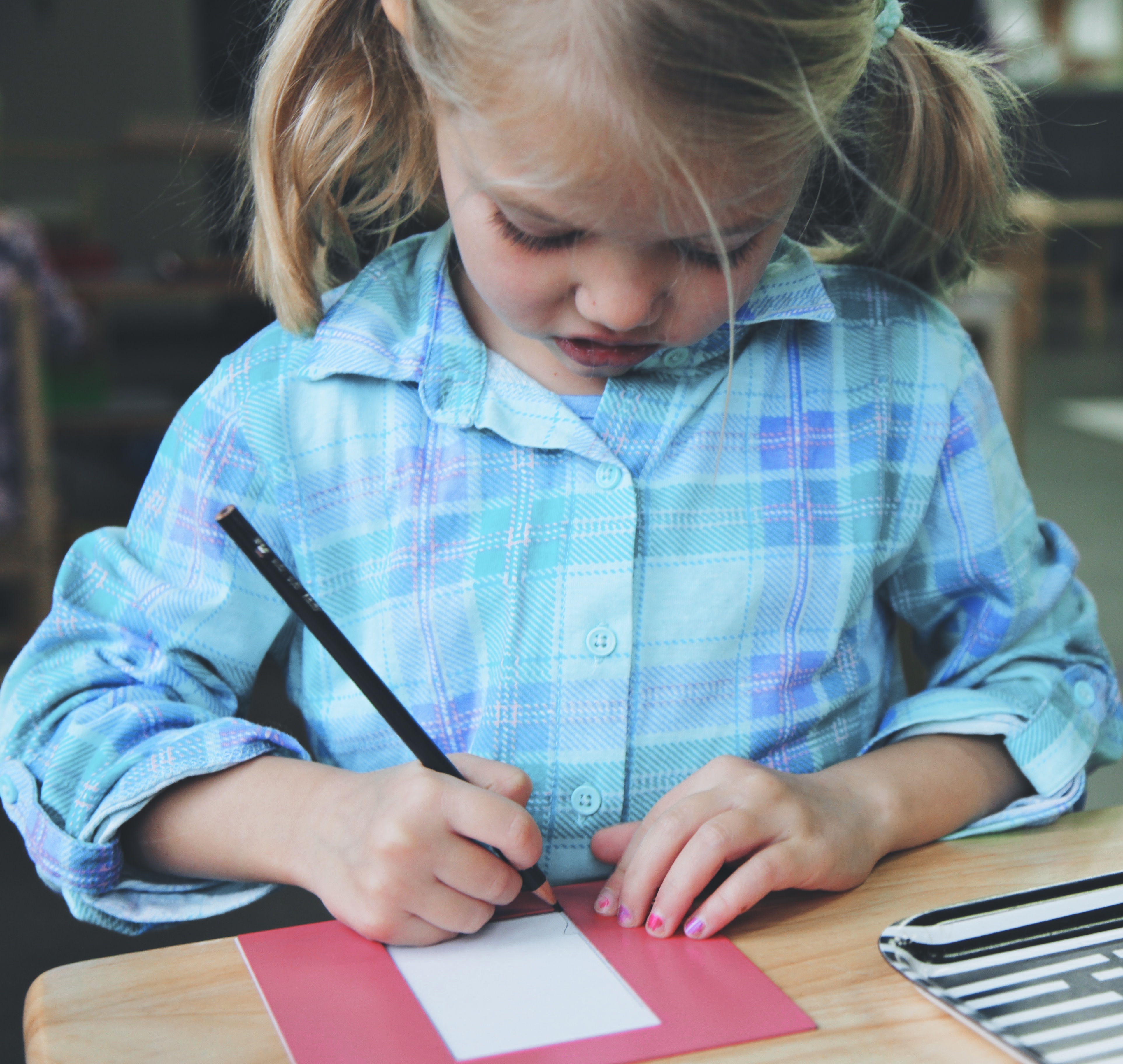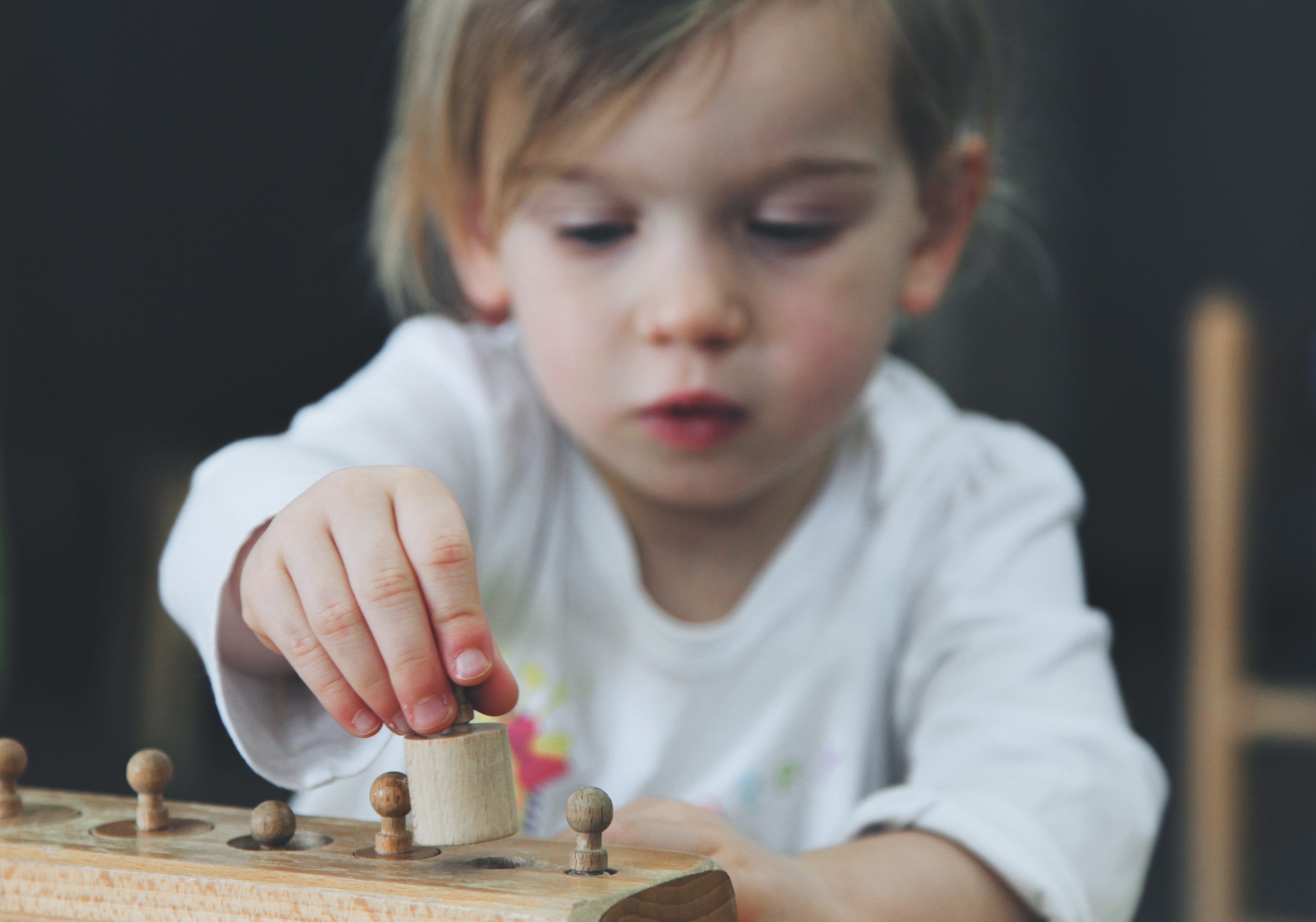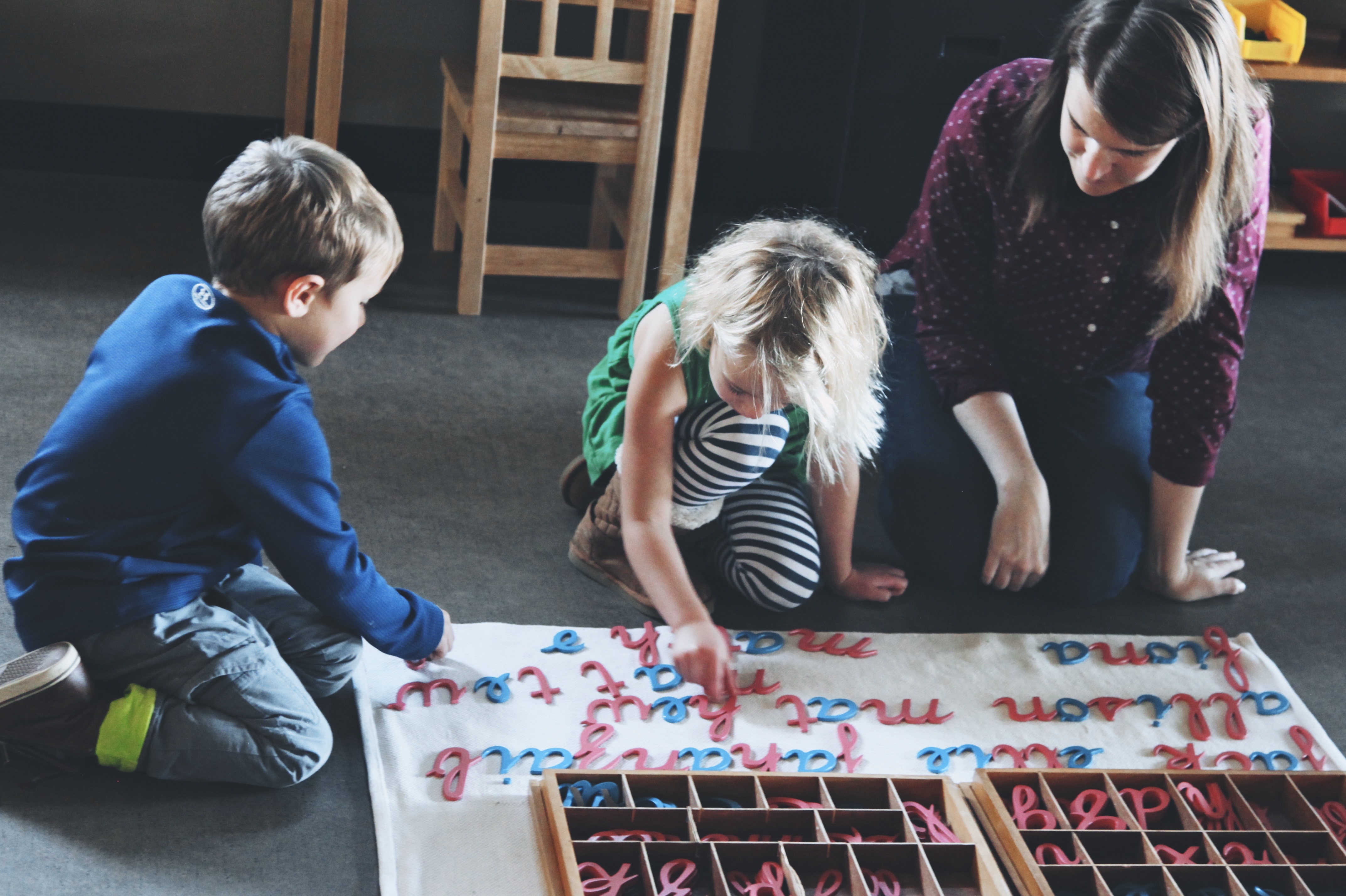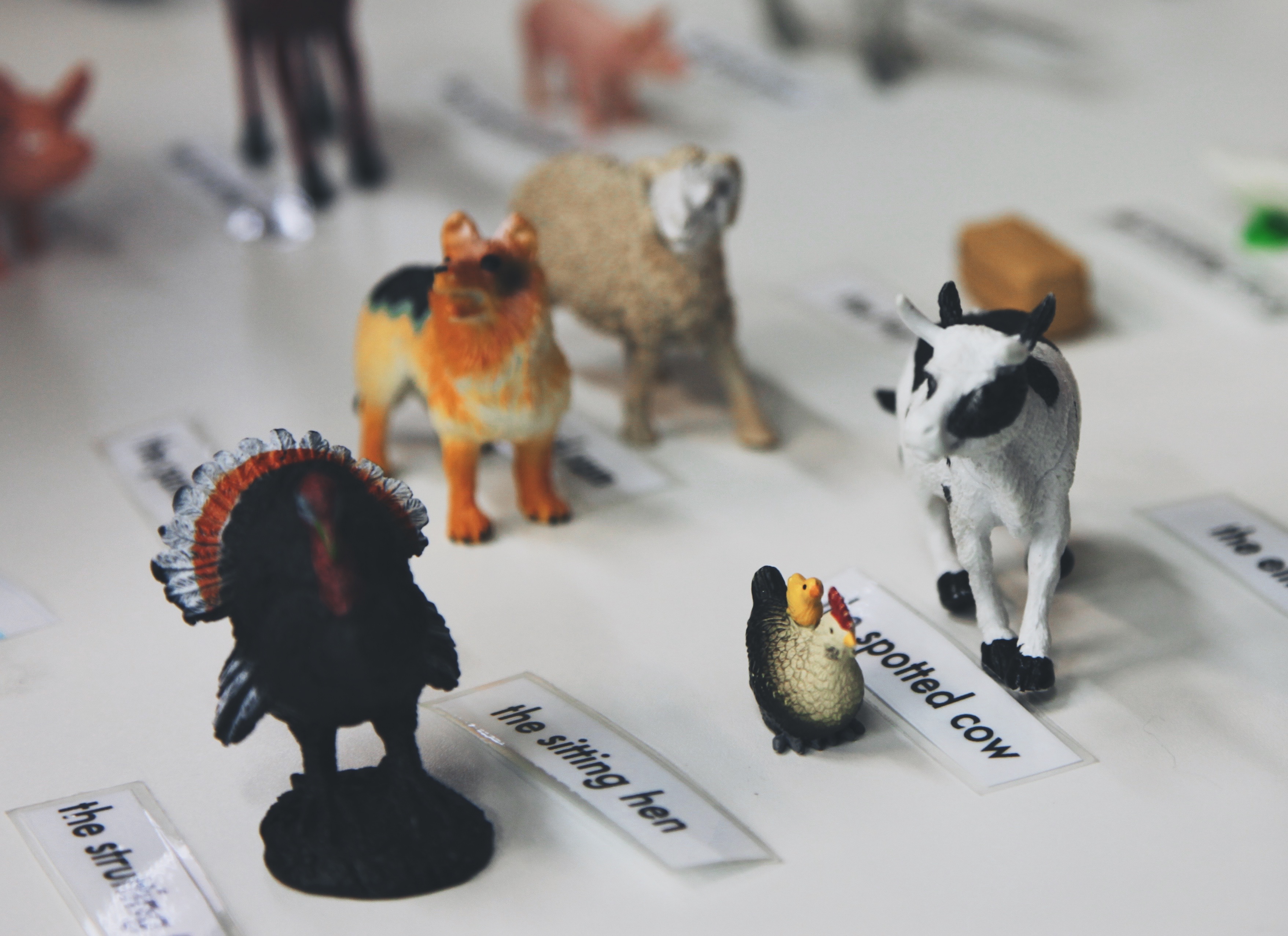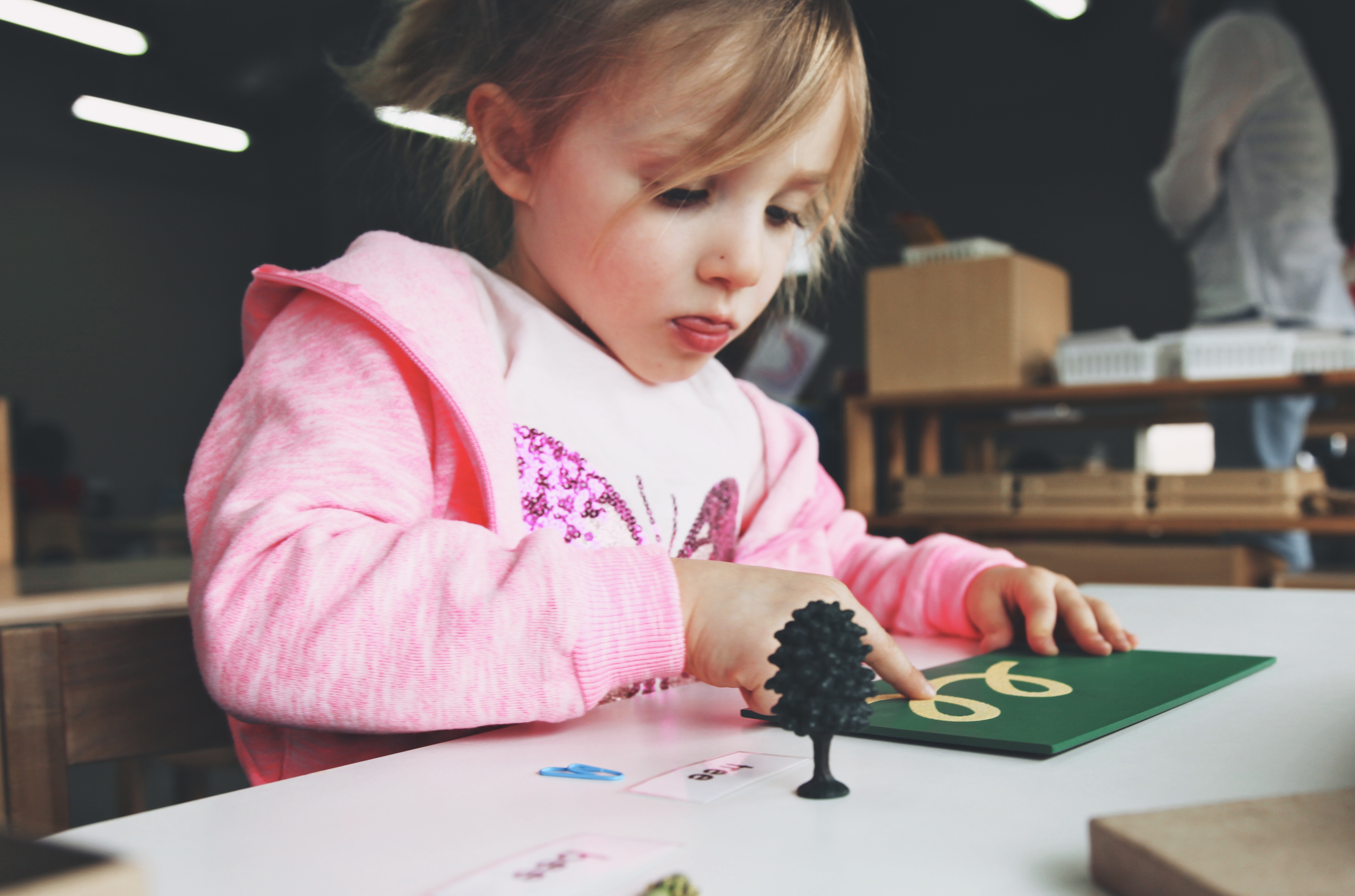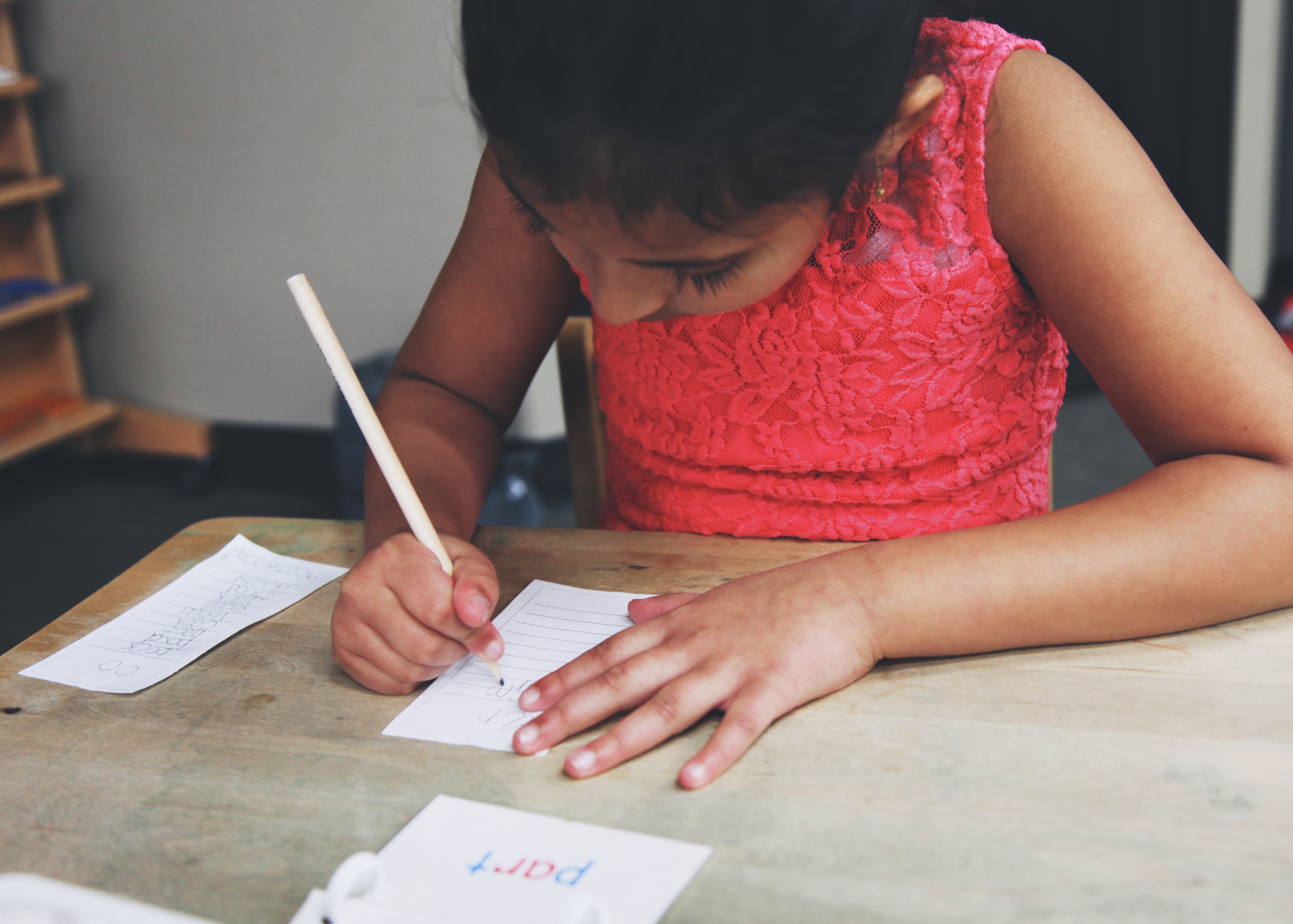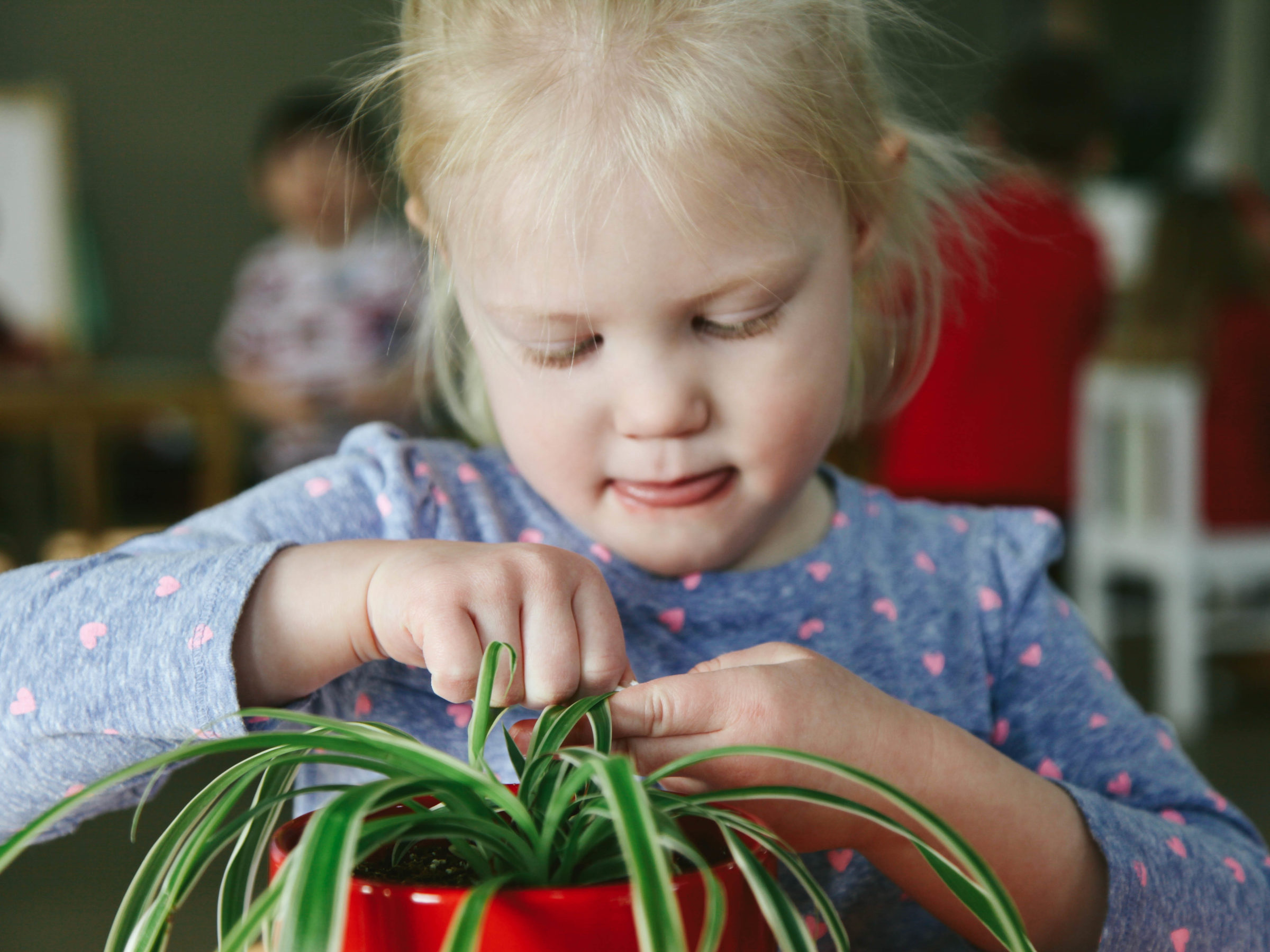The Path to Literacy
Montessori Activities
The path to literacy is unique in the Montessori classroom. Rather than begin by identifying common simple words — cat, ball — we begin with sounds, and move first to writing, then reading.
We start with Sound Games, an activity with a child or with a small group when we introduce the idea of Sounds. I’m thinking of someone in our class whose name begins with “mmm.” Who is it? We start with sounds, rather than letter names, since, more often than not, the letter doesn’t say it’s name.
We might have a collection of small objects, or colors, language a child is already familiar with. We ask a question. “I’m thinking of a color on the rug that begins with ‘p,’ what is it?” Wait for the connection to be made. If a child isn’t identifying the sound, we provide assistance. “I’m thinking of a color in my hand that begins with ‘p,’ what is it?” Perhaps then the information syncs. Pink! It’s pink! We help solidify this knowledge. “Yep! Pink begins with ‘p.’” This isn’t a guessing game, you’re not trying to get the child to guess what you’re thinking, you’re trying to help her identify sounds.
When the initial sound is clear, we can introduce final sounds. Pink starts with “p” and ends with “k,” and then we can ask a child what other sounds she hears in “pink.” The initial and final sounds are typically the most obvious, but the middle sounds are just as important for attaching meaning.
Writing again takes an unexpected turn. There are two paths here — handwriting and composition.
Skills leapfrog one another. A child’s mind might be capable of identifying the sounds in a given word they’re interested in transcribing, but their hand is still developing control and coordination. These two parts of writing — the Hand and the Mind — are developing independently, and we don’t want to wait for one in order to aid the development of the other.
We’re getting a child’s hand ready through materials like the Cylinder Block or pegged puzzles, where she’ll hold the knob the same way as she’ll hold a pencil. Even before she sits down to write, her muscles are preparing.
There are various materials for art which encourage careful use of a tool — colored pencils and crayons, a brush for painting or for glue.
We’re practicing tracing shapes with the Geometry Cabinet, and then with the Botany Cabinet. What is writing letters, but replicating a shape?
The Metal Insets more closely resemble preparation for handwriting. A child traces a shape, then fills in the outline very carefully. If you want people to know what you’re thinking, your handwriting needs to be legible.
Composition is usually what we mean when we say a child has started writing. Composition starts after a child is comfortable with Sound Games. She can identify the first sound in words, and sometimes even the last and middle sounds.
We’ll begin by selecting a few Sandpaper Letters and taking them to a table. We’ll say, “Remember mmm? What can we think of that has mmm in it?” Mom, money, mouth… “Would you like to see what mmm looks like?” We’ll turn it over and trace it. This post explains more about the Sandpaper Letters.
We’ll introduce the Sandpaper Letters three at a time, until a child has mastered quite a few. We’ll continue to play Sound Games, refining the process until she’s quite familiar with the first, last, and middle sounds in words.
We’re ready for composition — the Moveable Alphabet, a collection of letters in small compartments in a tray that a child uses to form words phonetically.
We’ll take the Moveable Alphabet, boxes with letters cut out, to a rug. We’ll make a list, or gather a few objects we want to write. “Let’s think of colors. Red. What’s the first sound in red?” Instead of simply naming the sound aloud, we’ll find the letter that makes that sound. We’ll line them up, composing words.
Children might hear all the sounds, or the first and last sounds. They might be mis-hearing sounds. There are Phonograms, letters that come together to make a unique sound, like sh. At first, we’re not focusing on Spelling. Spelling comes later. Spelling is important, but we don’t want a child to get hung up on spelling at first.
A child will write lists of words, phrases, or even whole sentences, and we might overhear her sounding out the letters on the rug, reading what she’s written. This is a good indication a child is ready for reading.
We start by reading small, simple, phonetic words. We take out a material called the Phonetic Object Box, and go through all the small items in the box. Perhaps a frog, a hen, a doll, we want to make sure the child knows what we’re calling these items, before we ask her to read them.
After naming all the objects, we’ll carefully write labels, one at a time. The child will sound out the letters, and surprise herself when she strings them together to form a coherent word.
There’s lots and lots of practice with simple reading at this stage. She can certainly write more than she can read, and comprehend far more than that. She’ll read labels and assign them to objects, cards, things around the room.
We’ll slowly introduce all the nuances of English — strange spellings, common phonograms, different ways to make the same sound (like f and ph), the same way to make different sounds (like key and bee and lead).
The wonderful part about introducing literacy with sounds, is that a child can read any word she sees. She can decode it with the myriad tools she has, put them together, and ask, does that make a coherent word? She’ll end up memorizing common words, through practice, but once she’s started reading, with a bit of time and patience, she can read anything.
Written by:
Charlotte Snyder

